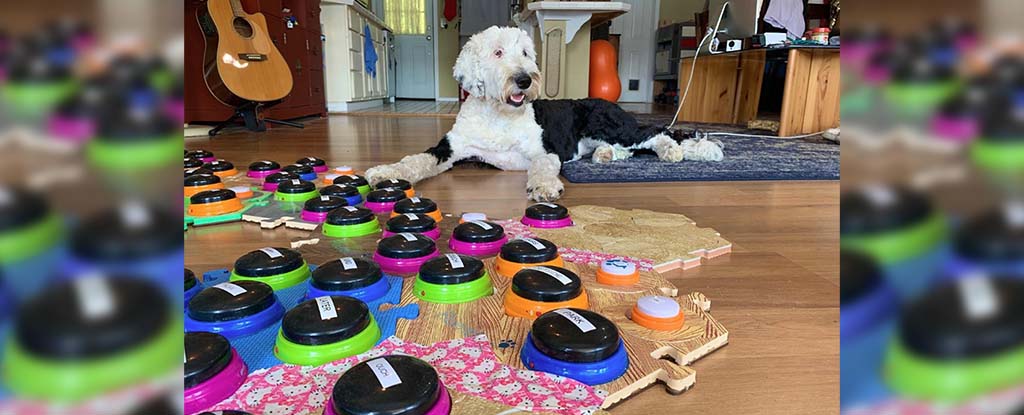If you’ve been on Instagram or TikTok recently, you’ve likely come across those viral videos of dogs hitting soundboard buttons while their proud owners feign exasperation at their furry friend’s seemingly eloquent demands.
Who wouldn’t want to give their beloved pet the opportunity to talk back in a way we can understand?
Skeptics such as this biologist have unsurprisingly raised their eyebrows at this fad, which has owners claiming their dogs can use the soundboards to form near-sentences asking for food, requesting help, raising alerts, and even questioning their mirror reflection.
frameborder=”0″ allow=”accelerometer; autoplay; clipboard-write; encrypted-media; gyroscope; picture-in-picture; web-share” referrerpolicy=”strict-origin-when-cross-origin” allowfullscreen>
But now a new study led by scientists at the Comparative Cognition Lab at the University of California San Diego has found this viral phenomenon is more than just a gimmick.
“This study addresses public skepticism about whether dogs truly understand what the buttons mean,” says cognitive scientist Federico Rossano, senior author of the study.
He says they found “that words matter to dogs, and that they respond to the words themselves, not just to associated cues.”
A dog might respond to the word “outside” by rushing to the door if their owner says it, but would they react the same if their owner pressed a soundboard button that says the word instead? What about if the word is spoken by a stranger? Or if the stranger presses the soundboard button?
To test these variables, the team ran two experiments investigating the contexts in which dogs understand specific words.
Two separate groups of family pet dogs were enlisted; in one experiment, the researchers visited the homes of 30 dogs, and for the other, 29 dog owners conducted the experiment themselves, following instructions from the scientists.
All these dogs had already been trained by their owners to use a soundboard, otherwise known as an ‘augmentative interspecies communication (AIC) device’, to respond to the words “out/outside”, “play/toy”, and “food/eat/dinner/hungry”.
Regardless of the identity of the person producing the words (an unfamiliar researcher or the dog’s owner), and the mode of delivery (spoken or via button-press), the dogs in the study reacted to play-related and outside-related words with contextually appropriate behaviors.
“This suggests that dogs respond appropriately to button presses even in the absence of other contextual cues or owner-produced cues,” the authors report.
Across both experiments, the dogs showed around seven times more play-directed behaviors in response to play-related words, and equal levels of outside-directed behaviors in response to outside-related words, “suggesting that they recognized and responded appropriately to these two words,” the authors write.
But the researchers found no conclusive evidence that the dogs distinctly responded with food-directed behaviors to food-related words.
@whataboutbunny Tricky trickster #cleverboy #smartdog #manipulation #talkingdogs
Because the results were equivalent regardless of whether the experiment was run by the researchers or a dog owner following instructions, Rossano and colleagues say there’s potential to enlist dog owners across the world to participate as citizen scientists and scale up the evidence for soundboard-based communication.
While previous research also suggests dogs can correctly use and understand at least some words, including Chaser the border collie, who knew the names of 1022 of its toys, the team points out those studies didn’t test verbal cues in the absence of other contextual clues.
“Future studies [will] explore how dogs actively use these buttons, including the meaning and systematicity behind sequences of button presses,” Rossano says.
“Our research underscores the importance of studying animals in their home environment, providing a more ecologically valid understanding of their abilities.”
This research is published in PLOS ONE.





